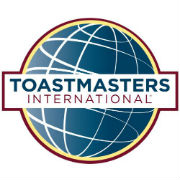
This role affords you the opportunity to expand your coaching skills beyond speeches. You are learning to evaluate key functionaries, coaches, and the meeting as a whole. Special emphasis is placed on coaching the Table Topics Master and the Toastmaster. Ideally, this role is held after you’ve coached at least 2 speeches.
Before the Meeting:
Contact the Toastmaster to obtain the theme for the meeting. Contact scheduled Coaches and Functionaries (Timer, Ah Counter, Grammarian, Ballot Counter, Chuckle Master, and Camera Person) a few days before the meeting to confirm or re-confirm their attendance. If substitutes are needed, this will provide time to find them. Also, some participants may have forgotten that they are on the program. Early contact gives participants time to prepare. If anyone advises that they cannot fulfill their role, remind them that it would be helpful if they attempted to find a replacement, but be sure to assist them in recruiting substitutes when necessary. Alert the Vice President Production of any vacancies, as this person is most knowledgeable about who is available.
The back of your Competent Communicator manual has a section on the General Evaluator which you might review (we call this same post ‘Club Coach’).
When you contact the Coaches, make sure they understand their responsibilities. Encourage them to speak with the person whose speech they will be evaluating during the meeting break. Each manual speech emphasizes different aspects of public speaking (such as using gestures, or vocal variety), and the coach needs to understand these before the speech.
Be sure that all of the Functionaries know what they are supposed to do. Refer them to the Club’s website (www.renaissancespeakers.com) or to the back of their Basic Manual for information specific to their meeting role. Let them know that they will have approximately one minute to describe their function at the beginning of the meeting; and that they should make their reports as short and concise as possible (in the interest of time) at the end of the meeting. Review the hats for Table Topics Master and Toastmaster to familiarize yourself with what you will watch for in those roles.
At the Meeting:
Make sure Coaches and Functionaries are present. If a substitute Coach is needed, coordinate with the Vice President of Production and the Toastmaster to recruit one, and advise that person to obtain the manual of the speaker they are coaching ASAP so they can review the speech criterion. Remind the Functionaries (other than the Coaches) that they will have approximately one minute to describe their hat at the beginning of the meeting; and that they should make their reports as short and concise as possible (in the interest of time!) at the end of the meeting.
When the Toastmaster first calls upon you, go up to lectern and say words to this effect:
“Mr./Madam Toastmaster, fellow Toastmasters, and honored guests–I am the Club Coach. I will be watching and listening to ensure that the meeting is conducted properly. I will lead the Coaching segment of the meeting, and provide a general coaching of the meeting at the end.”
Then, introduce Functionaries in the following order:
1. Timer
2. Ballot Counter
3. Grammarian
4. “Ah” Counter
5. Camera Person
6. Chuckle Master
After the last prepared speech is given, the Toastmaster will again call upon you to approach the lectern. Shake the Toastmaster’s hand, and assume control of the meeting.
A. Explain the Coaching portion of the meeting (Speakers receive written and oral evaluations. Coaching is done to give constructive feedback to the speakers and to sharpen the Coach’s listening skills.
B. Introduce each Coach by name only (no introductory remarks, please) and which speaker they are coaching. Ask for a Timer’s report when the Coaches have finished.
C. Call for a vote from the audience for Best Coach and Most Improved Coach.
D. Ask for the “Ah” Counter’s and the Grammarian’s reports.
E. Give your general evaluation of the meeting, focusing on the roles of the Table Topics Master and the Toastmaster (see the guidelines below). Limit your evaluation to two minutes.
F. Return control of the meeting to the Toastmaster. Wait at the lectern to shake the Toastmaster’s hand.
Guidelines:
For coaching the Table Topics Master. Did the Table Topics Master…
- Ask approropriate questions that were original, well executed and well received by the audience?
- Explain the rules of Table Topics for the guests?
- Manage his/her time well, to allow as many people as possible to participate?
- Lead the applause?
- Make guests comfortable and aware of all their options if they were called upon? (guest options: take the question, just introduce self, or abstain.)
- Call for the Timer’s report at the conclusion?
- Call for a vote from the audience?
- Stay at the lectern until the respondent arrived?
- Approach the lectern quickly when respondent finished, to release him/her?
- Call on people in the proper sequence? The proper sequence is:
1. Members with no meeting function.
2. Guests.
3. Functionaries (other than Coaches / Toastmaster).
4. Coaches.
5. Speakers.
6. Club Coach.
7. Toastmaster
For coaching the Toastmaster. Did the Toastmaster…
- Bring enthusiasm and energy to the program?
- Appear prepared and confident about the program?
- Have an appropriate theme—well executed and well received by the audience?
- Remember and pronounce people’s names correctly?
- Transition easily and smoothly between speakers?
- Do a good job of introducing the speakers and their speeches?
- Call for the Timer’s report at the conclusion of the speeches?
- Remind the audience to complete their individual comment slips?
- Remind the audience to vote for best and most-improved speaker?
- Leave the lectern unattended?
The Renaissance Speakers is an award-winning and prominent Toastmasters club hosted by the Church of Scientology in Pasadena, California. Join us this weekend for a little “Saturday Night Live on Sunday Morning!” We meet from 9:00am to Noon, each and every Sunday. ALL ARE WELCOME!
